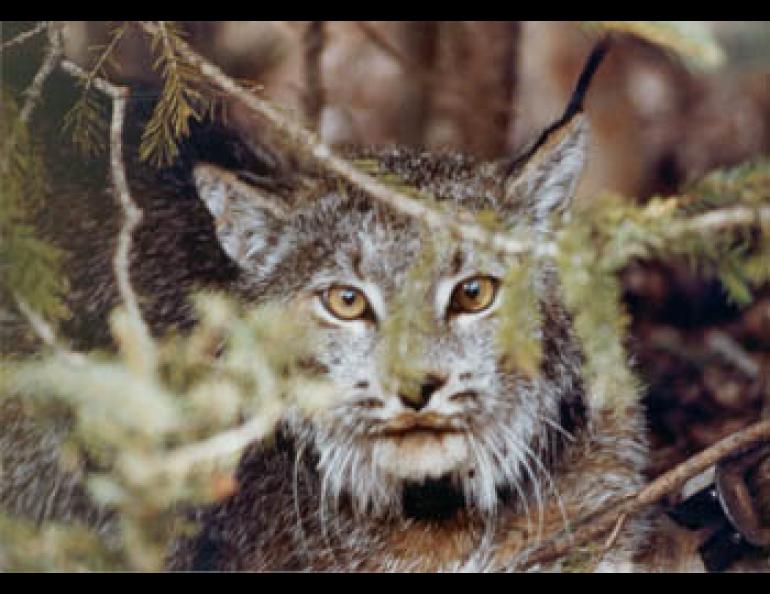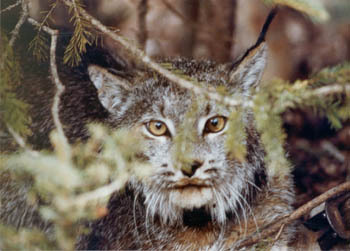
Of Long-Distance Travel and Lynx
With a recent crash in Alaska's snowshoe hare population, life is getting tough for lynx, the leggy cats of the north.
"We're in a lynx bust," said wildlife technician Stephanie Rickabaugh of the Kenai National Wildlife Refuge in Soldotna. "We're getting several calls of lynx getting into chicken coops. They tend to stay out of the developed areas when hare numbers are higher."
When their favorite food disappears, some lynx die, a few stay to hunt the lean country, and some pad away to new territory. A Montana scientist has determined that lynx have covered enough ground over the years that animals from Alaska to Montana are closely related.
Lynx live in most areas of Alaska, in spruce forests, lowlands, and other places favored by snowshoe hares. The slender cats have long legs and big feet that leave puffy round tracks in the snow. Lynx are abundant in Alaska and Canada but are rare enough in the Lower 48 that Michael Schwartz has seen nothing but scattered tracks in the last few years in his study area along the Montana/Idaho border. Schwartz is a biologist studying lynx with the U.S. Forest Service at its Rocky Mountain Research Station in Missoula, Montana. He recently gathered genetic information from 17 groups of lynx from Alaska, Canada, and the Lower 48 and found striking similarities, suggesting that lynx travel long distances and interbreed rather than existing in isolated pockets.
Schwartz called on Alaska scientists for blood and tissue samples of lynx from areas including the Kenai Peninsula, Paxson, Copper Center, Gold King Creek and Susitna Lake. Ted Bailey, a biologist completing a 20-year study of lynx on the Kenai National Wildlife Refuge, donated lynx blood samples to Schwartz, as did Gordon Jarrell of the University of Alaska Museum in Fairbanks. Schwartz found strong evidence of "gene flow," meaning that lynx throughout western North America may travel even more than wolves and coyotes.
Schwartz's genetic evidence contradicts a theory that lynx live in tight groups and don't travel much. Scientists subscribing to this theory say lynx's synchronized 10-year cycles of boom and bust are attributable to large weather patterns, such as El Nino or the North Atlantic Oscillation, that affect snowshoe hare abundance over the whole continent.
Northern scientists have found that lynx sometimes cover a lot of ground. Randy Zarnke, wildlife disease specialist with the Alaska Department of Fish and Game, said a trapper in Fort Yukon caught a lynx that biologists fit with a radio collar near Whitehorse a few years ago.
"That's a straight-line distance of 400 miles, and God knows it didn't walk in a straight line," Zarnke said. "These times in the cycle when rabbits are disappearing, lynx will go a long way to find food."
Alaskans might not see as many lynx in the next few years, but lynx will be back when the hares rebound. The Lower 48 is a different story. In the entire Rocky Mountains and Pacific Northwest, only a few pockets of lynx exist, which gives Schwartz's work added urgency. If lynx are all interconnected, as he thinks, land managers need to figure out the types of country that allow lynx to travel long distances and protect those hare-rich corridors, possibly allowing the silent cats to rebound in the Lower 48.





